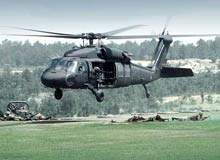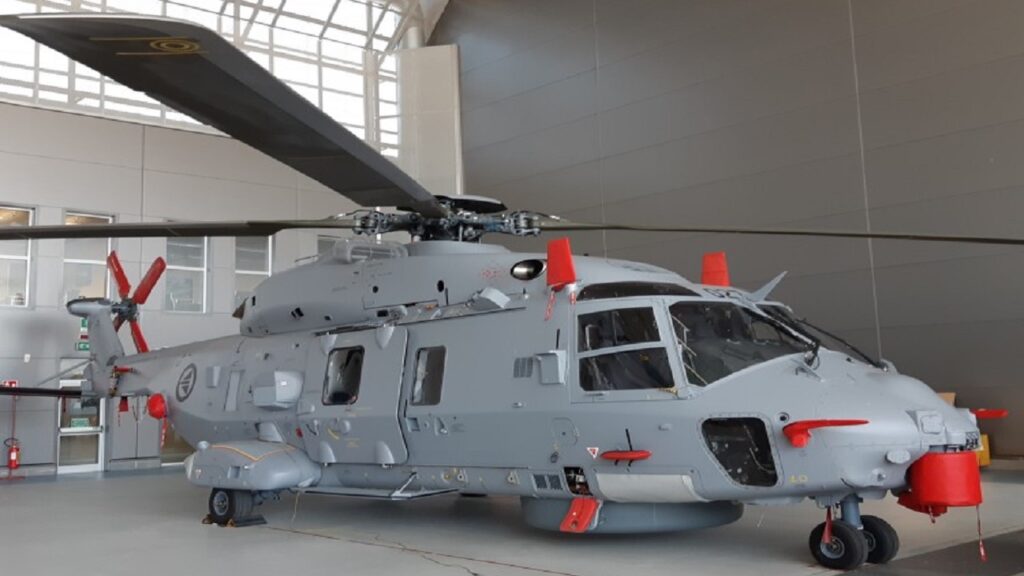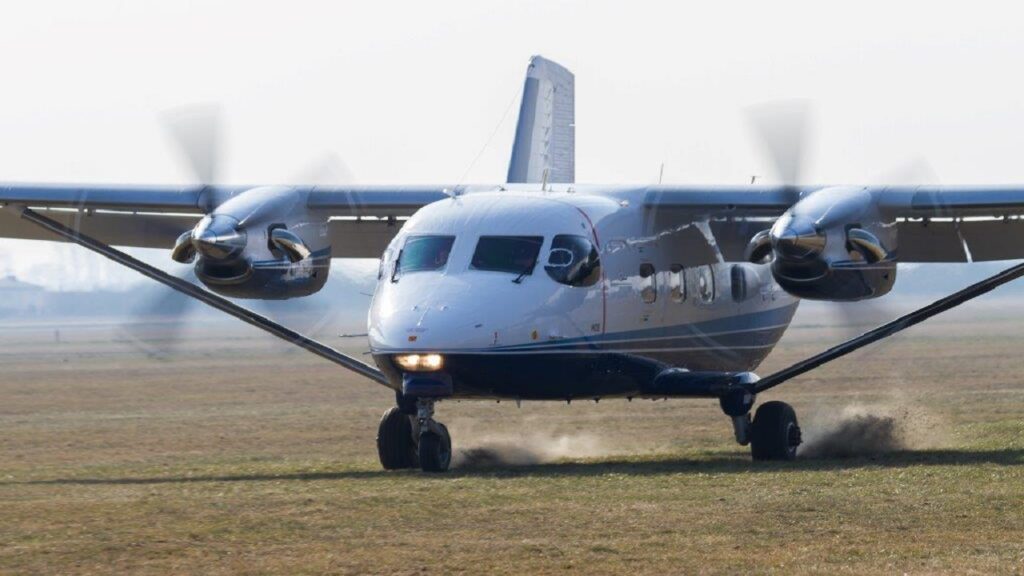
The multimission Sikorsky MH-60S Knighthawk helicopter entered service in February 2002. The US Navy is expected to acquire a total of 237 of the MH-60S helicopters, to carry out missions such as vertical replenishment, combat search and rescue, special warfare support and airborne mine countermeasures.
The helicopter began full-rate production in August 2002. As of January 2011 52 MH-60R and 154 MH-60S helicopters were in the service with the US Navy. First deployment of the new helicopter took place on board USS Essex, Wasp Class amphibious assault ship, in January 2003 and a number of MH-60S helicopters were deployed in support of Operation Iraqi Freedom.
MH-60S Knighthawk helicopter development
The helicopter was originally designated CH-60S, as a replacement for the US Navy’s Boeing CH-46D Sea Knight heavy-lift helicopters in the vertical replenishment role. The helicopter was redesignated MH-60S as a result of an expansion in mission requirements to include a range of additional combat support capabilities. Retirement of the US Navy Sea Knights concluded in September 2004.
Sikorsky was awarded the US Navy contract to develop the MH-60S in 1997. The production aircraft made its maiden flight in January 2000. The operational evaluation (Opeval) began in November 2001 at the Naval Air Warfare Centre at Patuxent River in Maryland and concluded in May 2002.
CAE was contracted to develop two MH-60R tactical operational flight trainers (TOFTs) for delivery by late 2013.
In June 2007, the Royal Navy of Thailand became the first international customer of the MH-60S, with an order for two helicopters, which were delivered in August 2011. They are used for maritime utility, logistics and troop transport.
Lockheed Martin was awarded a $10m contract in September 2010 to develop software for MH-60R and MH-60S helicopters.
The US Navy awarded a contract worth $360m to Lockheed Martin in January 2011 for supplying advance spectrum systems for deployment in the MH-60R by April 2013.
MH-60S design
The structure of the MH-60S is based on the proven design features of the UH-60L Black Hawk and the naval variant, the SH-60B Seahawk.
The helicopter uses the baseline structure of the Black Hawk with Seahawk T-700-GE-401C engines, hover-in-flight refuelling and fuel dumping. It also has the Seahawk’s rotor system and dynamics, including the automatic rotor blade folding system, rapid folding tail pylon, transmission and drive train with improved durability gearbox, rotor brake and automatic flight control computer. The helicopter also uses the Seahawk rescue hoist for search and rescue missions and the naval cockpit doors.
The MH-60S uses the Black Hawk airframe, which provides the larger cabin volume and double-doors needed for cargo and passenger transport, enabling troops to embark and disembark quickly. The MH-60S retains the Black Hawk’s provisions for mounting the external pylons to carry stores and equipment, providing added capability to carry out a wide range of missions. The MH-60S has the Black Hawk’s 9,000lb external cargo hook, gunner’s window, landing gear with tie downs and wire strike protection, along with hover IR suppresser, automatic stabilisation equipment and fuel cells.
New design features incorporated into the Knighthawk include the tail cone bulkhead and the large cabin is fitted with a new cabin cargo handling system.
MH-60 common cockpit
The helicopter is equipped with the new glass MH-60 common cockpit, which is also fitted on the US Navy MH-60R, developed by Sikorsky to replace the Seahawk. Prime contractor for the common cockpit is the Owego Helo Systems division of Lockheed Martin Systems Integration at Owego New York.
The cockpit includes four 8in × 10in active matrix liquid crystal displays and dual programmable operator keysets. The avionics includes dual flight management computers and an audio management computer. The navigation suite includes a Northrop Grumman (Litton) LN-100G dual embedded global positioning system and inertial navigation system. Telephonics Corp supplies the communication management system.
The pilot and co-pilot sit side by side on armour-protected seats. A third crew member is seated next to the forward cabin window. The forward hinged doors are jettisonable.
Lockheed Martin was awarded a USN contract in November 2004 for an upgrade that included the integration of Link 16, a Ku-band datalink and an improved multispectral targeting system, MTS-A.
MTS-A includes seven fields of view colour TV camera, forward-looking infrared system with electronic zoom, laser rangefinder / designator / illuminator and triple mode avieo autotracker. A further contract in September 2005 included a 12-satellite GPS receiver and ground proximity warning system.
Mission systems
The helicopter is designed in an air transport configuration that is easily modified with mission kits, for example mine countermeasures systems and combat search and rescue kits. The heated and ventilated main cabin can accommodate up to 20 armed troops.
Airborne mine countermeasures
The MH-60S, fitted with airborne mine countermeasures (AMCM) made its first flight in July 2003.
Lockheed Martin Systems Integration – Owego, with Sikorsky, is integrator for the MH-60S mine countermeasures systems which includes: Raytheon airborne mine neutralisation system (AMNS) with BAE Systems Archerfish expendable underwater vehicle that destroys the mines; Northrop Grumman rapid airborne mine clearance system (RAMICS), a non-towed mine neutralisation system that will clear near surface and surface moored mines using a Kaman Aerospace laser target sensor and a 30mm mk44 gun; Raytheon AN/AQS-20A towed sonar with mine identification system which entered production in September 2005; Northrop Grumman airborne laser mine detection system, AN/AES-1 ALMDS, which began low-rate initial production in September 2005; and EDO Corporation organic airborne and surface influence sweep (OASIS).
AN/AES-1 ALMDS detects and classifies floating and near-surface moored mines, using pulsed laser light. The ALMDS pod is mechanically attached to the MH-60S with a standard bomb rack unit 14 (BRU-14) mount.
Combat search and rescue (CSAR)
In the combat search and rescue role the MH-60S replaced the HH-60H in 2007. Lockheed Martin was awarded a contract in December 2004 to integrate the armed helicopter mission kit on the CSAR MH-60S.
The kit includes a digital map, AN/AAS-44 FLIR, the electronic warfare self-defence suite fitted on the MH-60R, an additional pylon to carry Hellfire air-to-surface missiles and mk54 digital torpedo, and crew-served weapons, including 7.62mm guns from port and starboard cabin windows and 0.50-calibre guns from port and starboard cabin doors. Development testing was completed in February 2007 to be followed by operational evaluation and service entry.
Countermeasures
The MH-60S countermeasures suite includes: Northrop Grumman AN/APR-39AV(2) radar warner, ATK AN/AAR-47V(2) missile warner and the BAE Systems IEWS AN/ALQ-144V(6) infrared countermeasures set.
General Electric T700-GE-401C turboshaft engines
The helicopter is equipped with two General Electric T700-GE-401C turboshaft engines.
The engine is configured with one centrifugal and five axial stages and has a take-off rating of 1,260kW. The helicopter carries 2,233l of fuel in internal fuel tanks. The helicopter is equipped with a hover-in-flight refuelling system (HIFR) and fuel dump vents.
The Pentagon has initiated the integrated high-performance turbine engine technology programme (IHPTET) with the US Army, leading to the definition of the common engine programme (CEP). It is planned that the all-new engine defined under the CEP will eventually be fitted on the MH-60S helicopter.
The engines drive a four-blade main rotor. The helicopter is equipped with electrically actuated blade folding for ease of stowage of the helicopter on board ship.
The Global Military Rotorcraft Market 2011-2021
This project forms part of our recent analysis and forecasts of the global military rotorcraft market available from our business information platform Strategic Defence Intelligence. For more information click here or contact us: EMEA: +44 20 7936 6783; Americas: +1 415 439 4914; Asia Pacific: +61 2 9947 9709 or via email.




